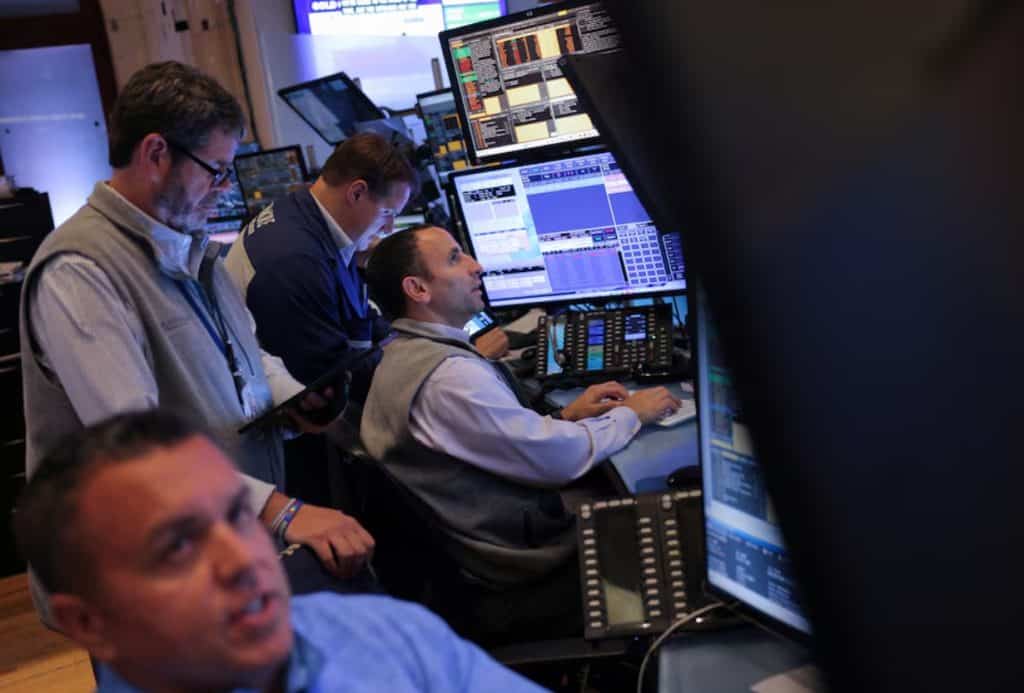
Treasury yields and the dollar fell while the Dow registered a record closing high on Friday as a subdued U.S. inflation report lifted expectations of an outsized interest rate cut at the Federal Reserve’s November policy meeting.
A global stock index also reached a record high, helped by China’s stimulus boost, and European shares posted an all-time high close.
The yen firmed against the dollar after Japan’s former Defense Minister Shigeru Ishiba looked set to become the next prime minister.
The personal consumption expenditures price index, the Fed’s favored inflation measure, rose 0.1% in August after an unrevised 0.2% gain in July. Economists had forecast PCE inflation rising 0.1%. In the 12 months through August, the PCE price index increased 2.2% after rising 2.5% in July.
Markets are fully pricing in a cut of at least 25 basis points at the Fed’s November meeting, with expectations for another upsized 50 basis point cut now up to 56.7% after the data, according to CME’s FedWatch Tool, from 49.9% before the release.
Other data showed U.S. consumer spending increased slightly less than expected in August.
The Fed kicked off its latest easing cycle on Sept. 18 with a 50 basis point cut in interest rates.
Ongoing conflict in the Middle East, with Israel’s attack in Lebanon, also pushed Treasury prices higher in a flight-to-quality bid, pressuring their yields, analysts said.
The yield on benchmark U.S. 10-year notes fell 3.5 basis points to 3.754%, from 3.789% late on Thursday.
Fed Chair Jerome Powell “can breathe a little sigh of relief,” said Brian Jacobsen, chief economist at Annex Wealth Management in Menomonee Falls, Wisconsin.
“After pushing for a 50 bps cut instead of a more conventional 25 bps cut – the personal income and spending data so far vindicates that decision,” Jacobsen added.
U.S.-listed shares of Chinese companies jumped on the latest series of stimulus measures from Beijing to boost the domestic economy.
The Dow Jones Industrial Average (.DJI), opens new tab rose 137.89 points, or 0.33%, to 42,313.00, the S&P 500 (.SPX), opens new tab fell 7.20 points, or 0.13%, to 5,738.17 and the Nasdaq Composite (.IXIC), opens new tab fell 70.70 points, or 0.39%, to 18,119.59.
All three major U.S. stock indexes posted a third straight week of gains.
MSCI’s gauge of stocks across the globe (.MIWD00000PUS), opens new tab rose 2.15 points, or 0.25%, to 852.84 and hit an intraday record high. Europe’s benchmark STOXX 600 index (.STOXX), opens new tab closed at a record high, ending up 0.5% at 528.08.
China’s blue chips (.CSI300), opens new tab jumped 4.5%, bringing their weekly rise to 15.7%, the most since November 2008. Hong Kong’s Hang Seng index (.HSI), opens new tab also gained 3.6% and was up 13% for the week, its best performance since 1998.
China’s central bank lowered interest rates and injected liquidity into the banking system, and more fiscal measures are expected to be announced before week-long Chinese holidays starting on Oct. 1.
Ishiba won the leadership contest of Japan’s ruling Liberal Democratic Party in a narrow victory. Ishiba is a critic of past monetary stimulus and told Reuters the central bank was “on the right policy track” with rate hikes thus far.
Markets had been largely expecting a win for hardline nationalist Sanae Takaichi, an opponent of further interest rate hikes, pricing in loose monetary and fiscal policies and a weaker yen over the past week.
Against the Japanese yen , the dollar weakened 1.82% to 142.17.
The dollar index , which measures the greenback against a basket of currencies including the yen and the euro, was down 0.17% at 100.43 after falling to 100.15, its lowest since July 20, 2023, with the euro off 0.14% at $1.116.
Aluminum prices in London touched a 16-week high on fund buying triggered by the latest economic stimulus measures in top metals consumer China.
Three-month aluminum on the London Metal Exchange was 0.4% higher at $2,623 per metric ton in official open-outcry trading after hitting $2,659, the highest since June 6.
Oil prices rose on Friday but fell on the week as investors weighed expectations for higher global supply against fresh stimulus China.
U.S. crude rose 51 cents to settle at $68.18 a barrel and Brent edged up 38 cents to $71.98 per barrel.
Spot gold was down 1% at $2,643.88 per ounce by 1742 GMT. Gold prices were headed for their best quarter in more than eight years.





























